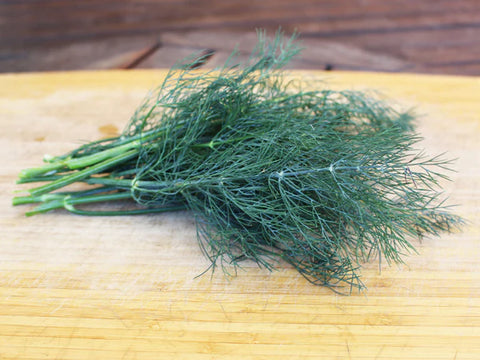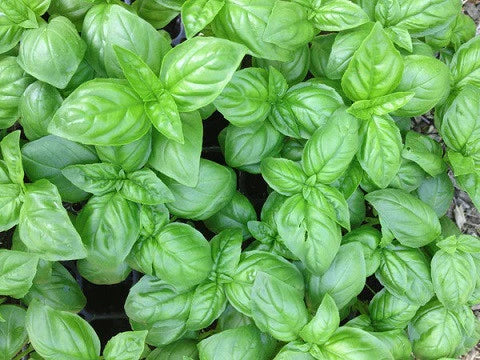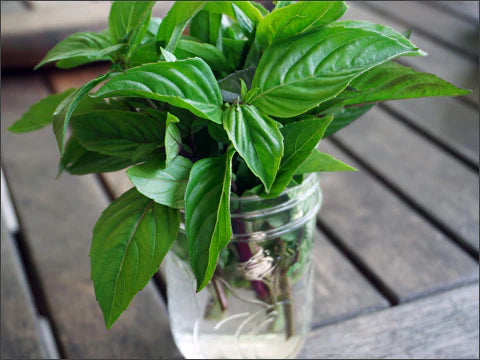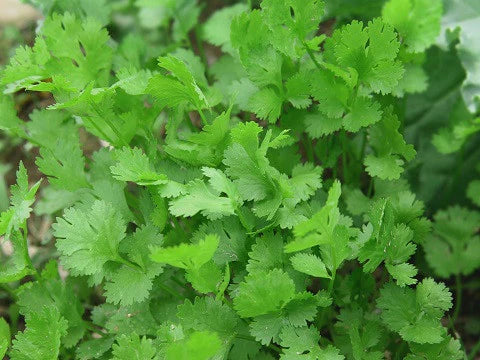Herbs have been used throughout history for both culinary and medicinal purposes, well before recorded history! Many of our ancestors may not have survived had it not been for the powerful herbal remedies they discovered through trial and error. Today, herbal medicine is making a comeback, and people are realizing that maybe our ancestors were onto something.
In addition to health benefits, can you imagine some of your favorite dishes without the herbs and spices that give them their character – Pesto without basil? Curry without turmeric? Gingerbread without ginger? Today, we can grow herbs indoors as well, giving us no reason not to grow these powerful and delicious crops in our own homes.
Pictured: Bouquet dill (click for seeds)
🍃 Why Grow Herbs?
- Herbs are prolific – you can have fresh herbs available year-round!
- They’re fun – use herbs to spice up your meals.
- They’re nutritious - with lots of vitamins and nutrients!
- There are endless varieties – there are over 30 varieties of basil alone!
- Herbs will help you save money – store-bought herbs can be pricey!
- Herbs are great for sharing - clippings, and potted herbs make great gifts!
Pictured: Genovese Basil (click for seeds)
📝 Tips for Growing Herbs
Starting seeds:
For optimal results, plant herb seeds inside under grow lights indoors, or sow directly outside (basil should be started inside). A heating mat will speed up germination. Start seeds in trays with small cells. Over time, transplant them into larger pots (except dill and cilantro, which do not do well with transplanting).
Soil:
Use a good seed-starting potting mix (we recommend Vermont Composting’s Fort Lite) to start your seeds. This lighter soil allows seeds to poke through to the surface more easily, which ensures easier germination for the plants. Be sure that your potting soil has nutrients supplied by compost, worm castings, or other organic amendments – this will provide the needed nutrients to your growing plants.
Light:
Herbs can be grown indoors or outdoors. When growing indoors, we recommend using T5 fluorescent lights. Keep the lights 4 inches away from the plants. Place a small, oscillating fan to blow between the plants and lights. Turn lights on for 14 hours per day.
Water:
Give your herbs enough water, especially when they are germinating. Make sure the soil is moist, but not wet.
Pictured: Krausa Curly Parsley (click for seeds)
Planting and Transplanting Herbs Outside:
Determining when to move your herbs outside depends on their cold tolerance and the average last frost date in your region. Perennial herbs can be planted outside several weeks before the last frost date (the last frost date in southeast Michigan is May 20th. Most annual herbs should be planted outside until after the last frost date (May 20th).
Harden off your plants: Slowly acclimate your plants to the outdoor environment over 1-2 weeks before transplanting outside. To do this, place plants outside during the day in a shady, low-wind area. Every 2 days, place them in a slightly more sunny area (such as an area that is sunny in the morning but gets afternoon shade). Repeat this process until plants can handle both full-day sun and cool, overnight temperatures. After planting, be sure to water in your plants!
Pictured: Sweet Thai Basil (click for seeds)
Maintaining Your Herb Garden Indoors:
If you decide to keep your herbs growing indoors, follow these guidelines:
- Find a spot in your house with as much natural light as possible. South and southwest-facing windows are ideal. Or use a T5 fluorescent grow light with a fan.
- Certain herbs (like parsley, thyme, basil, and mint) need bright light so keeping them underneath grow lights is a good idea.
- Good soil drainage is important! Be sure your container has a hole in the bottom and put a saucer under your plants. Be sure to empty the saucer so that plants are not sitting in water.
- Fertilize your plants with a good organic fertilizer according to the label (approximately once per month).
- Plants growing inside are susceptible to several insect pests, including spider mites and mealy bugs. Keeping plants healthy is the best defense. Insecticidal soap can be used to keep these pests at a dull roar.
- It is best to eliminate old, sick plants and replace them with new ones. Just remember, these bugs will crawl from adjacent plants, so get rid of sick plants before starting new ones!
Other tips:
Each herb is different! Usually, our seeds come with growing instructions for each seed (or check out our growing instructions online under each seed variety). Make sure to read these instructions in case there are special instructions for a particular herb.
- Most herbs grow better in well-drained soil, so don't overwater.
- Avoid overfertilizing your herbs.
- Remove any flowers that form on the plant.
🌿 Harvesting Herbs
- Harvest herbs in the mornings or evenings when temperatures are cooler (to prevent wilting).
- Be careful not to overharvest! Don’t cut off more than a quarter of a plant at a time. In fact,
- regularly cutting 1-3 inches off the tips helps keep plants bushy and lush.
- Annual herbs like cilantro, dill, and basil can be left on the stem after harvest and put in a cup of water to keep them fresh.
- Perennial herbs can be bunched and stored fresh or dried.
Herb Storage
To dry herbs, you can either bunch and hang them (not basil), or use a food dehydrator. A creative way to help your herbs last longer is to mix them with oil and then freeze them (an ice cube tray is a good tool for this).
Herb Recipes
Herbs are incredibly versatile and can be added to almost any dish to spice it up. Here are some recipe ideas:
- Carrot and Kohlrabi Slaw
- Mediterraneanish Lentil Salad
- Garlic (Es)scape Pesto
- Basil Salt (or other herbed salts)
- Basil-Dill-Elderberry Cocktail





